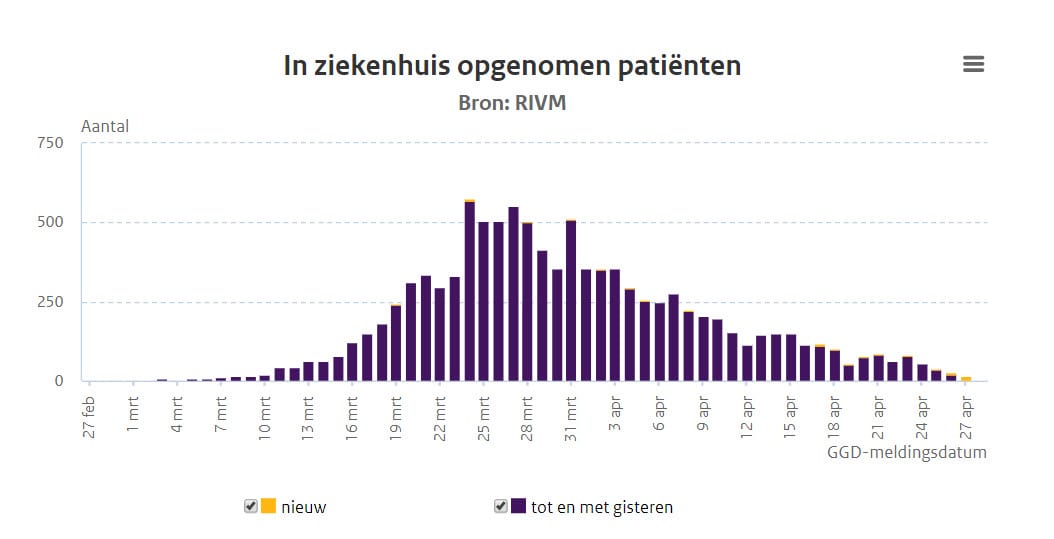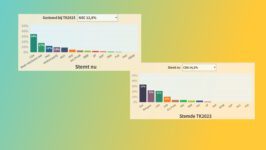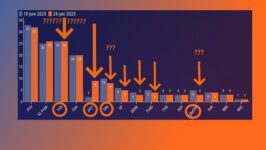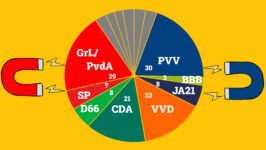What do the numbers say, are we doing well or not? In the past few days we heard in the various talk shows on TV, that the R0 (reproduction factor) is on the rise again towards 1. That gives you the feeling that “we” are going in the wrong direction again, despite all the strict […]
Lees volledig artikel: What do the numbers say, are we doing well or not?
What do the numbers say, are we doing well or not?
In the past few days we heard in the various talk shows on TV, that the R0 (reproduction factor) is on the rise again towards 1. That gives you the feeling that “we” are going in the wrong direction again, despite all the strict measures,.
But if you delve a bit deeper into the actual data, you see on the one hand how shaky that observation is, and on the other hand, that this increase, if it really would be there, doesn’t mean much at the moment.
So let’s look at the figures in the right perspective.
It strikes me that the RIVM does not mention the Reproduction Number (R0) in its daily reports. It only appears in their weekly briefing.
R0 is an indication of how many people are infecting other people. So if a total of 100 people are infected and they infect 100 others within a certain period of time, then R0 equals 1. The R0 of Covid-19 in the Netherlands was well above 2 in mid-March, but has been decreasing since March 21st (I think mainly because meetings with many participants are forbidden, so the so called super spread events didn’t take place anymore).
Difficult
It is difficult to determine the exact R0. In the first place because we do not know the real number of infections (Based on international research, such as this one, we estimate that the real number is a factor of 50 higher than the number of registered patients). It is therefore a derivative of other figures. Which one the RIVM uses I would not know (I assume hospitalizations or deaths).
The big problem with the known figures of our hospital admissions/deaths is that we don’t properly register where those victims come from. Let’s assume that half of them come from healthcare institutions. What happens there is actually independent of what happens outside those institutions. There may therefore be an increase in hospital admissions/deaths from care institutions, while the R0 in the rest of society continues to fall. So if the inflow of sick people from institutions and fatalities are also included in the calculation of R0, the R0 doesn’t really say anything about the situation in the rest of society anymore.
Last but not least. Look at the development of the hospitalizations below. At their peak (end of March) more than 500 a day. That has now dropped to less than 100 per day. The number of registered deaths peaked about 1 week later, with about 170 deaths per day. The current percentage of deaths compared to the peak is 30%. Considering the usual delay, we have to look at the hospitalizations from a week ago. That number was less than 20% of the peak a week ago. So based on the registration of the deaths, you’d say it’s going slower than the hospital admissions show. Which of the two gives the right picture? And which of these does the RIVM use?
Problems with figures
Because there are clear problems with both figures. It can go up or down without actually doing so.
Suppose, for example, that more and more people do not want to go to hospital with Corona complaints. That could explain the stronger decrease in the number of hospitalizations. Or the other way around.
With regard to the mortality rate, we already know for sure, that something important has happened. Statistics Netherlands calculated that more than twice as many people have died from Corona than the RIVM has registered. Similar differences can be seen in many countries (This is an overview from the New York Times).
Since April 10th, people have been trying to do their best to better register the correct number of Corona deaths. Maybe this will increase the number of deaths a bit. But in short: the development of the death rate is not an undisputed number either. So there are still some uncertainties in the hardness of the figures themselves.
But even if the figure is very hard, it is important to know which part comes from healthcare institutions and which part does not. Perhaps by now the number of deaths has mainly come from healthcare institutions, whereas at first that contribution was less?
But even if the R0 would have really risen back to around 1, that would mean that we at worst would end up in a situation, where the number of newly infected people would remain stable and would therefore by no means create a situation with strong growth again. That risk will probably only arise again in the autumn.
Finally.
On average people spend 3 weeks in an ICU. Three weeks ago about 70 persons a day were placed in Dutch ICUs. These people will now flow out on average per day. The influx at this moment is around 20.
Based on this, it can be assumed that the decrease of patients in ICU’s per day will be 40 to 50 per day in the coming days. So on May 1, 2, or 3, we will drop to a figure of less than 700 persons in our ICU’s. And in three weeks that number will be close to 500 if the number of new ICU admissions stays below 20 per day.
Even if the R0 will be around 1 again in the whole of the Netherlands, there will be no significant increase in the number of people in the ICU’s, at least until the autumn. Not even if we expand the measures considerably.
It wouldn’t surprise me if in the next 2 months, the number of patients in the ICU’s will still be well below 500.
When are we going to start working on that other important patient who is also in serious condition in the ICU: the Dutch economy and society? The situation has only got worse in the last three weeks.
You have just read: What do the numbers say, are we doing well or not?









